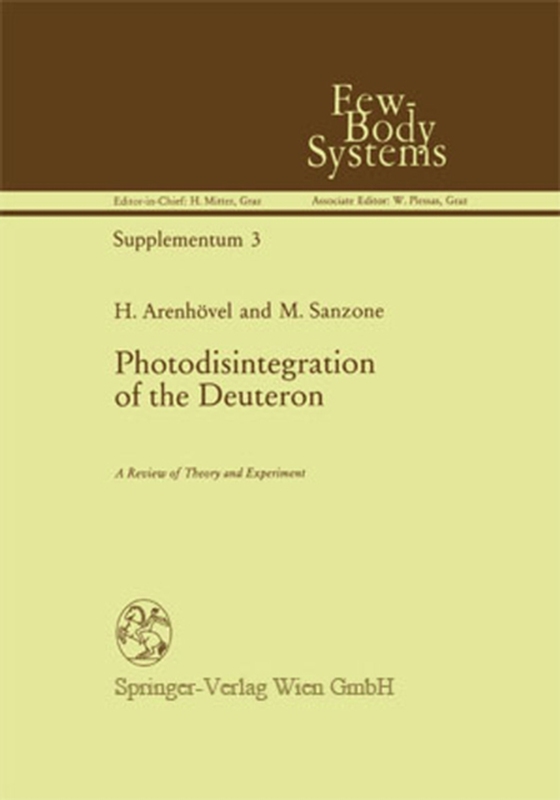
Photodisintegration of the Deuteron e-bog
875,33 DKK
(inkl. moms 1094,16 DKK)
More than 50 years ago, in 1934, Chadwick and Goldhaber (ChG 34) published a paper entitled "e;A 'Nuclear Photo-effect': Disintegration of the Diplon by -y-Rays."e;l in the introduction: They noted "e;By analogy with the excitation and ionisation of atoms by light, one might expect that any complex nucleus should be excited or 'ionised', that is, disintegrated, by -y-rays of suitabl...
E-bog
875,33 DKK
Forlag
Springer
Udgivet
6 december 2012
Genrer
PHFP
Sprog
English
Format
pdf
Beskyttelse
LCP
ISBN
9783709167014
More than 50 years ago, in 1934, Chadwick and Goldhaber (ChG 34) published a paper entitled "e;A 'Nuclear Photo-effect': Disintegration of the Diplon by -y-Rays."e;l in the introduction: They noted "e;By analogy with the excitation and ionisation of atoms by light, one might expect that any complex nucleus should be excited or 'ionised', that is, disintegrated, by -y-rays of suitable energy"e;, and furthermore: "e;Heavy hydrogen was chosen as the element first to be examined, because the diplon has a small mass defect and also because it is the simplest of all nuclear systems and its properties are as important in nuclear theory as the hydrogen is in atomic theory"e;. Almost at the same time, in 1935, the first theoretical paper on the photodisinte- gration of the deuteron entitled "e;Quantum theory of the diplon"e; by Bethe and Peierls (BeP 35) appeared. It is not without significance that these two papers mark the be- ginning of photonuclear physics in general and emphasize in particular the special role the two-body system has played in nuclear physics since then and still plays. A steady flow of experimental and theoretical papers on deuteron photo disintegration and its inverse reaction, n-p capture, shows the continuing interest in this fundamental process (see fig. 1.1).
 Dansk
Dansk

